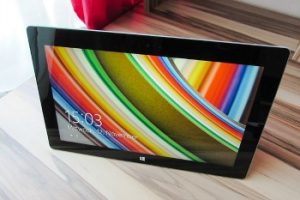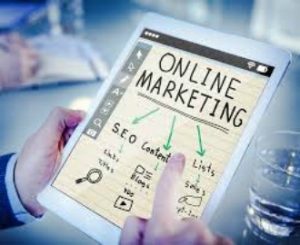We all know that technology is evolving. Hence, saying that the technology decades ago are outdated is an understatement. Let me borrow a quote from Belle of Disney fairy tale Beauty and the Beast, “it’s absolutely primeval” aptly describes gadgets older than ten years. Not only are their specifications not up to par with the demands of the times but the graphics and many other exterior features aren’t that appealing either.
 Microsoft has its fair share of struggles in the world of business. They may have made millions developing, manufacturing, licensing, supporting, and selling PC software and other PC-related goods and services to other PC companies but their own foray into selling their own PC line wasn’t also well received by the public. They lost hundreds of millions of dollars for all the Surface computers they weren’t able to sell, which was made worse by their Nokia acquisition and Windows Mobile that weren’t exactly a profitable one. Not even their gaming venture on Xbox is faring well against Sony’s PlayStation.
Microsoft has its fair share of struggles in the world of business. They may have made millions developing, manufacturing, licensing, supporting, and selling PC software and other PC-related goods and services to other PC companies but their own foray into selling their own PC line wasn’t also well received by the public. They lost hundreds of millions of dollars for all the Surface computers they weren’t able to sell, which was made worse by their Nokia acquisition and Windows Mobile that weren’t exactly a profitable one. Not even their gaming venture on Xbox is faring well against Sony’s PlayStation.
Yet perhaps because it’s way behind Apple, Microsoft’s hardware division is creating products more daring than much of what has been coming out of its rival lately.
The hybrid Surface Pro — the inheritor of that first Surface’s vision, the latest version of which was released in May — hasn’t just become a moneymaker for the company. It was also the clear inspiration for the Apple iPad Pro, which supports a pen and keyboard but still feels less like a full-fledged laptop than Surface does.
Late last year, Microsoft also unveiled Surface Studio, a big-screen desktop that bears a passing resemblance to the Apple iMac — except its vertical display effortlessly pivots into a kind of digital drafting table, a slick trick that you can imagine Steve Jobs having lots of fun showing off at a keynote address.
And in the spring, Microsoft showed off Surface Laptop, which sounds humdrum enough; in shape and purpose, it isn’t much different from the MacBook Air, Apple’s pioneering thin and light laptop. But Microsoft’s machine has a better screen than the Air, and, more important, a future. People loved the Air, but Apple doesn’t appear to want to upgrade it, so Microsoft stepped in to perfect Apple’s baby.
(Via: https://www.nytimes.com/2017/07/26/technology/microsoft-pcs-apple.html)
Like in any other business venture, there are risks involved and it is up to entrepreneurs if they want to take it or not. Not all risks are fruitful. Some can cost you a lot. Microsoft knows it very well after all the money they have lost over the years. However, their persistence and determination seem to be working to their advantage now as their surface computers/laptops are doing better in terms of sales. It seems that Apple is finally facing some major competition after all.
Microsoft (MSFT) is one of the oldest and newest tech companies at the same time. While it benefits from a strong core business model generating cash flow, management has proven its ability to develop other growth vectors. Their most recent success is called Azure, which is No. 2 in public cloud services. Azure has doubled its sales over the past 12 months and is prone for several years of growth. Finally, its strong relationship with corporate America will open the door for additional cross-selling opportunities as the cloud business expands. Microsoft is a buy today, even if the PE ratio is over 27.
Understanding the Business
Founded in 1975 on the promise of offering the best computer operating system with a graphical user interface, Microsoft is now doing business in 190 countries. Its domination in the world of personal computing interface has even earned MSFT a few legal suits for being a monopoly.
However, MSFT has evolved greatly since then and we no longer wait for the next Windows update to see its sales burst. The company now shows a more diverse and balanced business model:
The “More Personal Computing” includes Windows, Surface, and their gaming division. While the world of personal computing is mature, MSFT has found two growth vectors with their tablets (Surface) and games (Xbox).
The “Productivity and Business Process” includes the Office suites, Dynamics products, and cloud services along with their latest important acquisition: LinkedIn. I like what MSFT has done with their Office suites over the years as they offer it under a subscription based program.
Finally, the “Intelligent Cloud” segment includes server products and cloud services (led by the fast-growing Azure) and enterprise services. This is the fastest growing part of MSFT business.
(Via: https://seekingalpha.com/article/4090936-microsoft-old-tech-company-becoming-new-one)
By looking at what Microsoft has achieved so far, you’d realize that the world is really evolving and you can be successful if you learn to adapt to all these changes (albeit not always flawlessly considering the losses the company had to pay for because of certain business risks they took). Many companies have long since gone bankrupt and faded into oblivion because they weren’t able to be flexible enough to meet all these changes head on (Remember Nokia and Blackberry). While we all talk about innovation, not all new discoveries are widely received by the public. It just helps now that for Microsoft, touch computing has become fairly normal and their surface laptops and computers experienced a boost in sales because these gadgets are great alternatives for those who don’t like or can’t afford Apple products.
How Microsoft PCs Turned The Tide In Their Favor was initially seen on UP
source https://www.unabashedlyprep.com/site/entry/how-microsoft-pcs-turned-the-tide-in-their-favor/
 Conventional sales marketing and strategy is no longer effective in making your mark in a market as competitive like what we have now. You need to consider that technology is a big factor in today’s world
Conventional sales marketing and strategy is no longer effective in making your mark in a market as competitive like what we have now. You need to consider that technology is a big factor in today’s world  Today, there is news making its round on the web about male authors using gender-neutral names to hide their gender from their readers. But just what is all the fuss? And why are these male authors even doing this? What triggered them to hide their gender from the public? Is it really necessary in order for them to sell books? This are age-old questions because apparently, they've been doing it for centuries already and for good reason.
Today, there is news making its round on the web about male authors using gender-neutral names to hide their gender from their readers. But just what is all the fuss? And why are these male authors even doing this? What triggered them to hide their gender from the public? Is it really necessary in order for them to sell books? This are age-old questions because apparently, they've been doing it for centuries already and for good reason. In order to become a normal, healthy, and sociable adult, parents should not ignore their child’s social health to help them develop to their full potential. Unfortunately, there are various factors that can affect a child mental state and not all the time they will be showered with love and affection and guided properly as they grow. There are countless children out there that grow up in an environment of hate, violence, and abuse. There are even those poor kids that are born with mental ailments that they totally have no control over. It is the reason why now more than ever, everyone should give mental health the attention it needs especially among young children who still can’t make decisions for themselves and need the support of adults to help them overcome these problems.
In order to become a normal, healthy, and sociable adult, parents should not ignore their child’s social health to help them develop to their full potential. Unfortunately, there are various factors that can affect a child mental state and not all the time they will be showered with love and affection and guided properly as they grow. There are countless children out there that grow up in an environment of hate, violence, and abuse. There are even those poor kids that are born with mental ailments that they totally have no control over. It is the reason why now more than ever, everyone should give mental health the attention it needs especially among young children who still can’t make decisions for themselves and need the support of adults to help them overcome these problems. The issue of child abuse is ever growing as violence become common among people especially that they see it on the news day in and day out. And even if it eludes your understanding, there are certain individuals that are just jerks or perverts that takes delight in the pain and suffering of others. It’s even worse if the subject of their fantasies is young kids that shouldn’t be dragged into nasty stuff like these. Child sex abuse happens and you’d be surprised to find out how prevalent it is in today’s society. Most of the time, the child knows the predator and it hits close to home. If not, it can be someone they met online, which is not surprising as most kids nowadays are quite tech-savvy.
The issue of child abuse is ever growing as violence become common among people especially that they see it on the news day in and day out. And even if it eludes your understanding, there are certain individuals that are just jerks or perverts that takes delight in the pain and suffering of others. It’s even worse if the subject of their fantasies is young kids that shouldn’t be dragged into nasty stuff like these. Child sex abuse happens and you’d be surprised to find out how prevalent it is in today’s society. Most of the time, the child knows the predator and it hits close to home. If not, it can be someone they met online, which is not surprising as most kids nowadays are quite tech-savvy. As of now, Windows 10 is the latest OS from Microsoft and the most widely used by computer users all over the world. Even if it runs on current technology, Windows 10 is
As of now, Windows 10 is the latest OS from Microsoft and the most widely used by computer users all over the world. Even if it runs on current technology, Windows 10 is  For celebrities, keeping their skin clean and healthy isn’t just enough. Their skin has to look fresh and flawless too because it is their ticket to fame and fortune. People won’t spend money watching their movies or seeing them in concerts or events if they just look ordinary. Most celebrities have that star quality and charisma that only people who are self-assured and confident in their body and the way they look exudes. Fans and ordinary people don’t just admire celebrities, they try to imitate them too by taking care of their skin and staying young looking as they age aside from patronizing the brands they endorse.
For celebrities, keeping their skin clean and healthy isn’t just enough. Their skin has to look fresh and flawless too because it is their ticket to fame and fortune. People won’t spend money watching their movies or seeing them in concerts or events if they just look ordinary. Most celebrities have that star quality and charisma that only people who are self-assured and confident in their body and the way they look exudes. Fans and ordinary people don’t just admire celebrities, they try to imitate them too by taking care of their skin and staying young looking as they age aside from patronizing the brands they endorse.